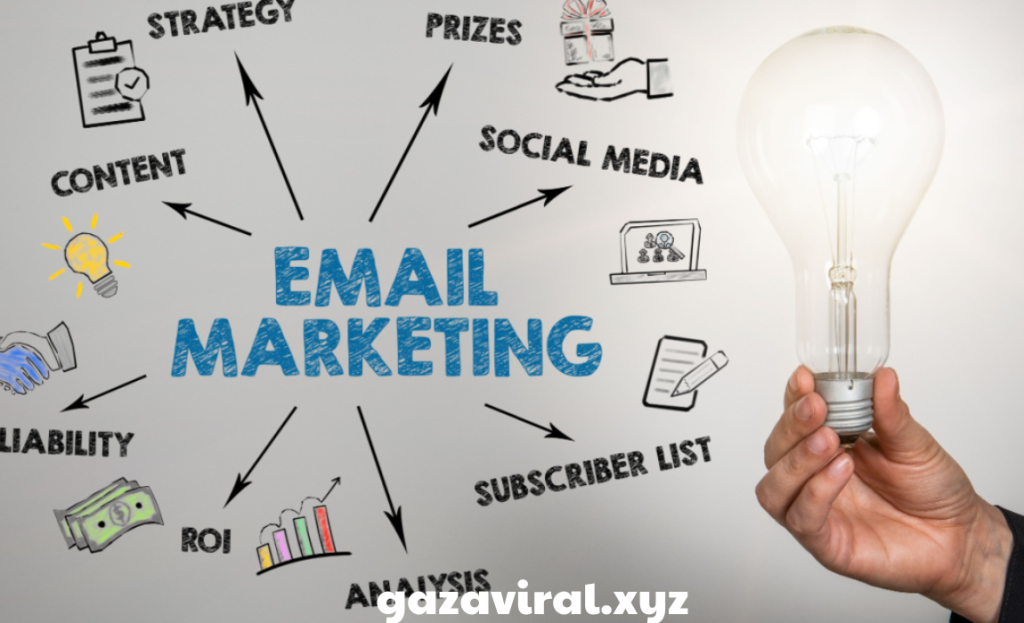Email Analytics & Optimization
Conversion Tracking from Email Campaigns: Maximizing Your Email Marketing ROI in 2024
Email marketing remains one of the most effective ways to engage with customers, nurture leads, and drive conversions. However, the success of an email campaign isn’t solely measured by open rates or click-throughs—it’s about how well your emails lead to actual conversions. Conversion tracking from email campaigns is crucial for understanding how your email efforts contribute to your business goals, such as sales, sign-ups, or other desired actions. In this article, we’ll explore the most effective methods for tracking conversions from email campaigns and optimizing your email marketing strategy for better results in 2024.
1. Why Conversion Tracking is Essential for Email Campaigns
While open rates and click-through rates (CTR) provide insights into engagement, conversion tracking tells you whether those interactions translate into meaningful business outcomes. Whether your goal is to drive purchases, newsletter sign-ups, or free trials, conversion tracking allows you to measure the actual ROI of your email marketing efforts.
Key Benefits:
- Measure Campaign Effectiveness: Conversion tracking helps you assess which emails are leading to valuable actions, such as purchases, form completions, or downloads.
- Optimize Email Content: By understanding what drives conversions, you can refine your email content, CTAs, and design to improve future campaigns.
- Track Revenue: For e-commerce businesses, tracking sales generated from email campaigns directly shows the revenue impact of email marketing, helping justify the investment in your email strategy.
Pro Tip: Focus on both macro-conversions (such as purchases or lead form submissions) and micro-conversions (such as clicks on a CTA or visits to a key page), as these all contribute to overall success.
2. Setting Up Conversion Tracking with UTM Parameters
One of the simplest and most effective ways to track conversions from email campaigns is through UTM parameters. These are small pieces of code that you add to the end of URLs within your email links, which allow Google Analytics (or similar tools) to track where your traffic and conversions are coming from.
How to Use UTM Parameters:
- UTM_Source: Identifies the source of traffic (e.g., “email”).
- UTM_Medium: Specifies the marketing medium (e.g., “newsletter” or “promo”).
- UTM_Campaign: Names the specific email campaign (e.g., “Spring_Sale”).
- UTM_Term and UTM_Content: Used for more detailed tracking, such as different links within the same email or specific offers.
Why It’s Important:
- Accurate Attribution: UTM codes allow you to attribute conversions accurately to your email campaigns, even when multiple marketing channels are in play.
- Detailed Reporting: With UTM parameters, you can dive deeper into which specific emails or links are driving the most conversions, allowing for better optimization of future campaigns.
Pro Tip: Use Google’s Campaign URL Builder to create UTM links quickly and consistently for all your email campaigns.
3. Integrating Email Platforms with Google Analytics
Another powerful way to track conversions is by integrating your email marketing platform with Google Analytics. Most email marketing tools (such as Mailchimp, HubSpot, or ActiveCampaign) offer easy integration with Google Analytics, enabling you to track email-driven conversions within your overall analytics dashboard.
Steps for Integration:
- Enable Google Analytics Tracking: In your email marketing platform, ensure that Google Analytics tracking is enabled. Most platforms automatically add UTM parameters to email links for seamless tracking.
- Set Up Goals in Google Analytics: Define your conversion goals, such as product purchases, lead form submissions, or page views, within Google Analytics. These goals will help you track specific actions that users take after clicking through from an email.
- Monitor Conversions: Use the “Acquisition” section of Google Analytics to monitor email campaign performance, particularly focusing on conversions attributed to email traffic.
Why It’s Important:
- Holistic Data: Integrating your email platform with Google Analytics gives you a comprehensive view of how email campaigns contribute to your overall marketing strategy.
- Campaign Performance: You can easily compare email conversions against other marketing channels, such as social media or paid ads, to see where your email efforts stand.
Pro Tip: Use Goal Funnels in Google Analytics to track the entire journey from the email click to the conversion point, allowing you to see where users might drop off.
4. Measuring Conversion Rates in Email Campaigns
Conversion rate is the percentage of users who take the desired action after clicking on your email. This metric provides a clear picture of how effective your email campaign is at turning clicks into conversions.
How to Calculate Conversion Rate:
- Conversion Rate = (Number of Conversions / Total Clicks) x 100
Why It’s Important:
- Action-Oriented Insights: High click-through rates (CTR) don’t always translate into conversions. Tracking conversion rates helps you understand how well your email content and landing pages are performing in terms of actual results.
- Campaign ROI: Conversion rate is a key metric for calculating the ROI of your email campaigns. It helps determine whether your emails are generating revenue or achieving other business goals.
Pro Tip: Optimize both your email content and landing pages for conversion. A disconnect between the email and landing page can result in high CTR but low conversions.
5. Tracking Purchases and Revenue from Email Campaigns
For e-commerce businesses, tracking sales and revenue generated from email campaigns is critical. Most modern email marketing platforms offer tools to track purchases directly within the platform or integrate with e-commerce platforms like Shopify, WooCommerce, or Magento.
Key Tools:
- E-commerce Tracking: Platforms like Mailchimp and Klaviyo allow you to track sales directly from email clicks. These tools also provide detailed reporting on revenue, average order value, and products purchased.
- Google Analytics E-commerce Tracking: If you’re using Google Analytics, enable e-commerce tracking to see which email campaigns are driving product sales, how much revenue they generate, and other key sales metrics.
Why It’s Important:
- Revenue Attribution: Tracking purchases from email campaigns allows you to see exactly how much revenue your email efforts are generating, helping you justify and refine your email strategy.
- Identify Top-Performing Campaigns: Tracking revenue helps you identify which email campaigns deliver the highest ROI, so you can replicate their success.
Pro Tip: Segment your audience based on purchase behavior to send more personalized emails that increase conversions and sales over time.
6. Using A/B Testing to Improve Email Conversions
A/B testing allows you to test different versions of your email campaigns to determine which elements drive the most conversions. By experimenting with subject lines, CTAs, images, or copy, you can find the optimal combination that leads to higher conversions.
Elements to Test:
- Subject Lines: Test different wording, lengths, or personalization to see which version generates the most opens and clicks.
- CTAs: Experiment with the placement, wording, and design of your CTAs to see which prompt users to take action.
- Email Layouts: Test different layouts (e.g., image-heavy vs. text-heavy) to find which design best engages your audience and leads to conversions.
Why It’s Important:
- Optimize Performance: A/B testing provides data-driven insights into what resonates with your audience, allowing you to continuously improve your emails for better results.
- Higher Conversions: By refining key elements of your emails, you can directly improve your conversion rate and, ultimately, your campaign’s ROI.
Pro Tip: Focus on testing one variable at a time for the most accurate results, and run A/B tests over a statistically significant number of email recipients.
7. Measuring Subscriber Lifetime Value (LTV)
In addition to tracking immediate conversions, measuring lifetime value (LTV) helps you understand the long-term impact of your email campaigns. LTV tracks how much revenue a subscriber generates over the course of their relationship with your brand.
Why It’s Important:
- Customer Retention: By measuring LTV, you can assess how well your email campaigns are nurturing leads and driving repeat business.
- Long-Term ROI: LTV helps you justify your email marketing efforts by showing the long-term revenue generated by a loyal subscriber, not just a one-time purchase.
Pro Tip: Use LTV to segment high-value subscribers and send targeted email campaigns that drive continued engagement and purchases.
Conclusion
Conversion tracking from email campaigns is essential for optimizing your email marketing strategy and maximizing ROI in 2024. By leveraging UTM parameters, integrating with Google Analytics, and tracking key metrics like conversion rates, revenue, and LTV, you can gain valuable insights into what works and what doesn’t. Implementing A/B testing and optimizing email content for conversions will further enhance your email performance, helping you turn more subscribers into customers. By focusing on the right metrics, you can ensure that your email campaigns deliver both immediate and long-term results.


